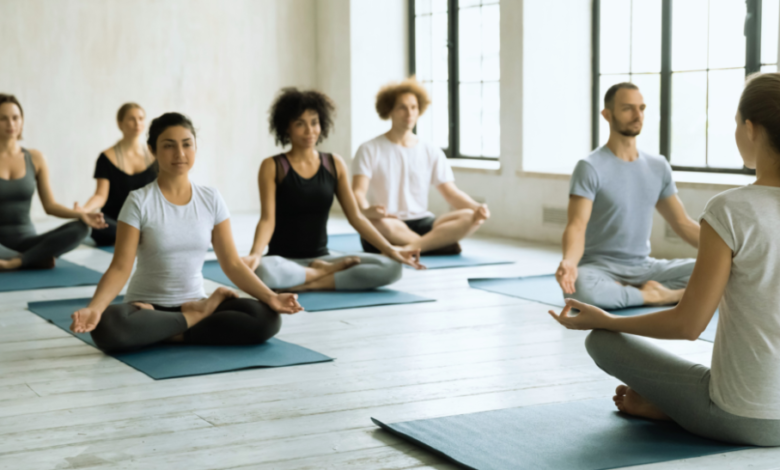Meditation Course: Stress‑Relief Training at Malaysian Centers

Let go of tension and find calm in a space designed for true relaxation. Surrounded by peaceful environments and supportive guidance, you can begin to release the weight of daily stress and restore inner balance. Joining a meditation course at Malaysian centers offers a practical and effective path to stress relief.
These courses blend mindfulness, breathing techniques, and gentle awareness training to help calm the nervous system. Whether you seek peace, clarity, or emotional healing, this experience guides you toward lasting well-being.
What Is Stress?
Stress is your body’s reaction to pressure or challenges. It can be:
- Acute: Short-term, like a deadline.
- Episodic Acute: Frequent stress, common in worriers.
- Chronic: Long-lasting, from ongoing problems.
- Eustress: Positive stress, like excitement.
Common Causes: Life changes, daily pressures, and negative thoughts.
How Stress Affects You:
- Body: Activates “fight-or-flight,” raising heart rate and stress hormones.
- Physical: High blood pressure, muscle tension, digestive issues.
- Mental: Anxiety, low mood, trouble focusing.
- Behavior: Sleep and appetite problems, unhealthy habits.
- Long-Term: Can lead to serious health problems like heart disease and depression.
How Meditation Helps:
- Body: Slows heart rate, lowers stress hormones, and activates relaxation.
- Brain: Reduces overthinking, controls emotions, and improves memory.
- Programs: MBSR is an 8-week course that teaches meditation to reduce stress and promote calmness.
- Easy Practices:
- Tactical breathing (inhale/exhale for 4 seconds).
- Body scan (relaxing body parts slowly).
- Mindfulness (being present in the moment).
It trains your mind and body to move from stress to calm, improving sleep, mood, and resilience over time.
What is Mindfulness?
Mindfulness means noticing the present moment without judging it as good or bad. This helps you see things clearly and stay calm, which reduces stress.
How to Practice Mindfulness Meditation:
- Find a quiet, comfortable place to sit or lie down.
- Focus on your breath, noticing how it moves in and out of your body.
- Gently scan your body from toes to head, simply noticing any sensations or tension without judgment.
- If your mind wanders, gently bring your attention back to your breath.
Using Mindfulness to Handle Stress:
- Notice what causes you stress during the day.
- When you feel stressed, pause and take a few deep breaths.
- Observe your feelings and thoughts without judging them.
- Pause and think before you respond.
This approach is like the STOP method:
- Stop
- Take a breath
- Observe what’s happening
- Proceed with intention
Mindfulness reduces stress, calms the mind, and supports thoughtful responses.
See also: Improving Your Financial Health With Bookkeeping 5305541804
Breathing Techniques to Calm the Nervous System
Breathing is closely linked to your nervous system, which manages automatic body functions. When you’re stressed, your breathing becomes fast and shallow. This activates your body’s “fight or flight” response, making you feel more tense and anxious.
But when you breathe slowly and deeply, it activates the “rest and relax” response, helping your body calm down and reducing stress.
Two simple breathing exercises to help you relax are:
- Diaphragmatic (Belly) Breathing: Sit or lie comfortably. Put one hand on your chest and the other on your belly. Breathe in deeply through your nose, letting your belly rise (not your chest). Breathe out slowly through your mouth, feeling your belly fall. Do this for 5–10 minutes to help your body relax.
- 4-7-8 Breathing: Sit or lie down comfortably. Put your tongue behind your upper front teeth. Exhale fully through your mouth with a whoosh sound. Close your mouth and quietly inhale through your nose for 4 seconds. Hold your breath for 7 seconds. Exhale completely through your mouth for 8 seconds. Repeat up to 4 times. This helps calm your nervous system and promotes relaxation.
Body Awareness and Progressive Relaxation
- Body Scan Meditation:
This is a mindfulness exercise where you slowly pay attention to different parts of your body, noticing any tightness or discomfort. It helps you become aware of tension and relax.
How to do it:
- Sit or lie down in a quiet, comfortable place where you can relax without distractions.
- Close your eyes and take deep breaths to relax.
- Focus on your toes, then slowly move your attention up through your body (legs, hips, stomach, chest, back, shoulders, arms, neck, head).
- When you feel tension, imagine breathing into that spot and letting it soften.
- After scanning your whole body, pause and notice how relaxed you feel.
Regular practice helps reduce stress and calm your body.
- Progressive Muscle Relaxation (PMR):
This technique helps you relax by tightening muscles, then releasing them to feel the difference.
How to do it:
- Sit or lie down in a quiet, comfortable place where you can relax without distractions.
- Close your eyes and take deep breaths to relax.
- Focus on your toes, then slowly move your attention up through your body (legs, hips, stomach, chest, back, shoulders, arms, neck, head).
- When you feel tension, imagine breathing into that spot and letting it soften.
- After scanning your whole body, pause and notice how relaxed you feel.
- Sit or lie down comfortably in a quiet place.
- Take deep breaths to calm down.
- Start with your feet: tighten muscles for 5 seconds, then relax.
- Move upward through your body (calves, thighs, stomach, chest, hands, arms, shoulders, neck, face, head).
Notice how Regular practice helps reduce stress and calm your body.
- Progressive Muscle Relaxation (PMR):
This technique helps you relax by tightening muscles, then releasing them to feel the difference.
How to do it:
- relaxed your body feels when you finish.
PMR is a daily practice that helps lower stress, anxiety, and improve sleep.
Cultivating Gentle Awareness and Emotional Balance
Mindfulness teaches us to face our feelings with kindness and without judging them. Instead of ignoring or fighting emotions, you can:
- Notice the Emotion: When you feel something strong, like anxiety or sadness, quietly say to yourself, “I’m feeling anxious right now.” Just recognizing it helps you handle it better.
- Name the Feeling: Give the emotion a simple label like “anger” or “fear.” This helps you see it more clearly and feel less overwhelmed.
- Observe gently: Notice how it feels in your body and mind without trying to fix it.
- Give It Space: Remember, emotions come and go. By not holding on tightly, you allow yourself to feel calm again.
You can try guided mindfulness meditations to practice accepting emotions.
Loving-Kindness (Metta) Meditation: For Self-Compassion and Healing
Loving-kindness meditation is about sending warm, caring wishes to yourself and others. It helps reduce self-criticism and builds emotional strength.
How to do it:
- Sit comfortably and close your eyes.
- Take a few deep breaths to relax.
- Think of someone you care about and silently say, “May you be happy, healthy, and peaceful.”
- Now say the same for yourself: “May I be happy, healthy, and peaceful.”
- Slowly extend these wishes to friends, acquaintances, and even people you find difficult.
Regular practice can increase positive feelings and reduce anxiety and depression.
Sharing in Groups
Sharing your feelings with a supportive group helps you feel less alone and more understood.
- Share how mindfulness affects your emotions.
- Listen kindly and without judgment to others.
- Understand that everyone’s feelings are valid and different.
This sharing helps build empathy and reduces loneliness.
How to Add Stress-Relief Practices into Your Day
You don’t need much time to reduce stress. Try these simple ideas:
- Tips for Meditation and Breathing:
- Start small with 5–10 minutes of meditation or deep breathing.
- Use apps like Headspace or Calm for guided sessions.
- Set reminders on your phone to take mindful breaks.
- When you do daily activities like brushing your teeth or walking, focus fully on what you’re doing to practice mindfulness.
Practice Mindfulness During Daily Activities:
- Take short, deep breaths to calm your mind.
- Do quick body scans to notice and relax tense areas.
- Think about things you’re grateful for to boost positivity.
Build Your Own Stress-Relief Toolkit:
- Use quick calming tricks like deep breaths or listening to music.
- Move your body with stretching, walking, or yoga.
- Express yourself with journaling, drawing, or hobbies.
- Stay connected with friends or support groups for encouragement.
Consistently practicing small habits helps reduce stress and improve overall health.




